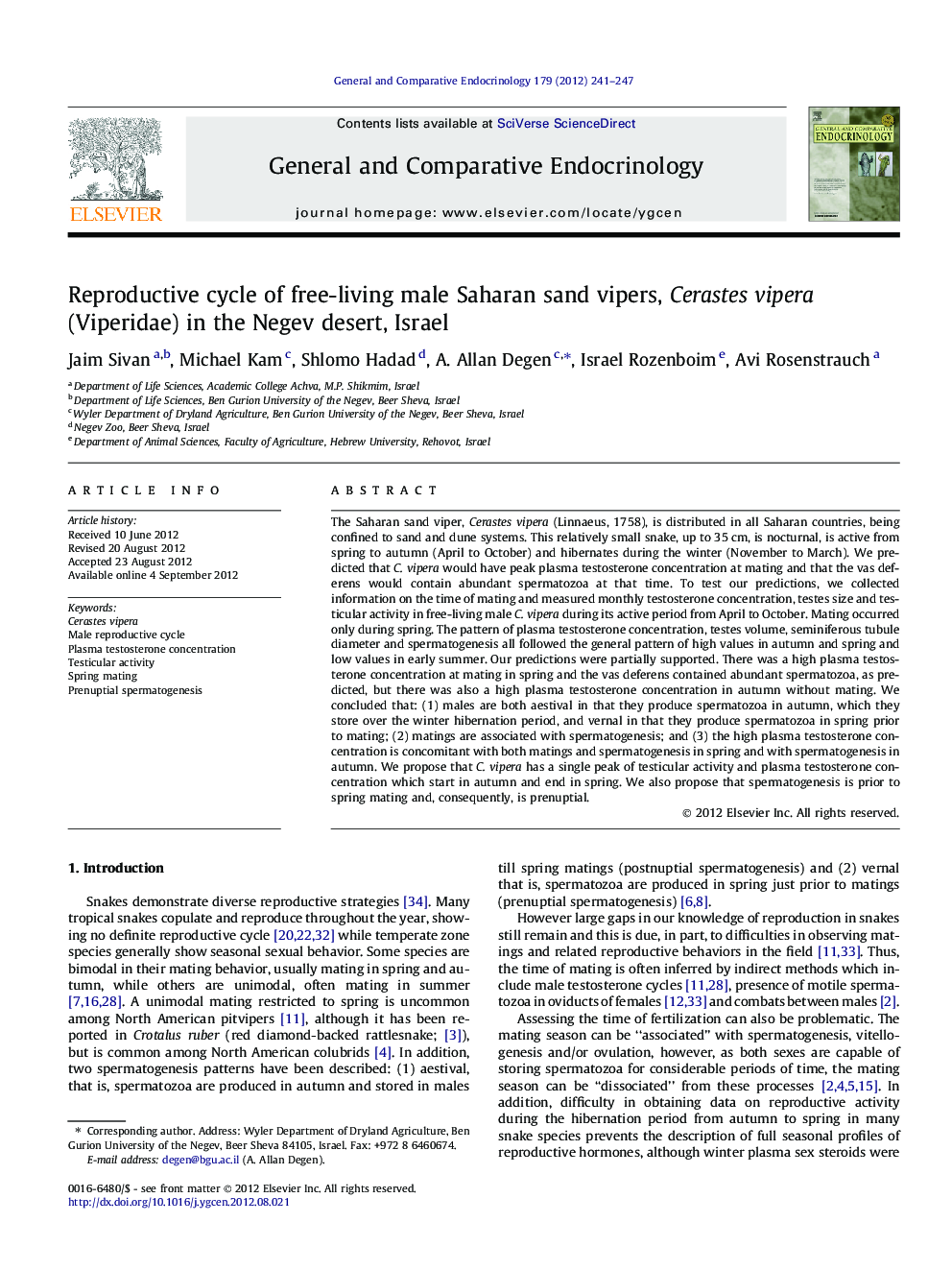| کد مقاله | کد نشریه | سال انتشار | مقاله انگلیسی | نسخه تمام متن |
|---|---|---|---|---|
| 5901585 | 1156114 | 2012 | 7 صفحه PDF | دانلود رایگان |

The Saharan sand viper, Cerastes vipera (Linnaeus, 1758), is distributed in all Saharan countries, being confined to sand and dune systems. This relatively small snake, up to 35Â cm, is nocturnal, is active from spring to autumn (April to October) and hibernates during the winter (November to March). We predicted that C. vipera would have peak plasma testosterone concentration at mating and that the vas deferens would contain abundant spermatozoa at that time. To test our predictions, we collected information on the time of mating and measured monthly testosterone concentration, testes size and testicular activity in free-living male C. vipera during its active period from April to October. Mating occurred only during spring. The pattern of plasma testosterone concentration, testes volume, seminiferous tubule diameter and spermatogenesis all followed the general pattern of high values in autumn and spring and low values in early summer. Our predictions were partially supported. There was a high plasma testosterone concentration at mating in spring and the vas deferens contained abundant spermatozoa, as predicted, but there was also a high plasma testosterone concentration in autumn without mating. We concluded that: (1) males are both aestival in that they produce spermatozoa in autumn, which they store over the winter hibernation period, and vernal in that they produce spermatozoa in spring prior to mating; (2) matings are associated with spermatogenesis; and (3) the high plasma testosterone concentration is concomitant with both matings and spermatogenesis in spring and with spermatogenesis in autumn. We propose that C. vipera has a single peak of testicular activity and plasma testosterone concentration which start in autumn and end in spring. We also propose that spermatogenesis is prior to spring mating and, consequently, is prenuptial.
⺠Testosterone and testes activity of Cerastes vipera were high in autumn and spring and low in summer. ⺠Sperm were produced in autumn prior to winter hibernation and in spring prior to mating. ⺠A single peak of testosterone and testes activity from autumn to spring is proposed. ⺠Consequently, spermatogenesis in C. vipera is prenuptial as it occurs prior to spring mating.
Journal: General and Comparative Endocrinology - Volume 179, Issue 2, 1 November 2012, Pages 241-247